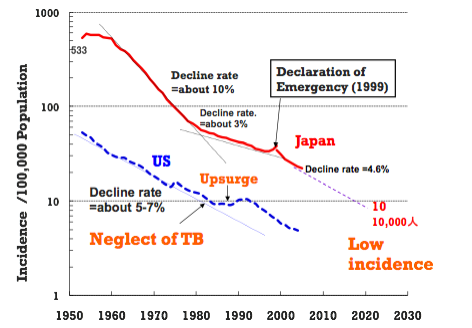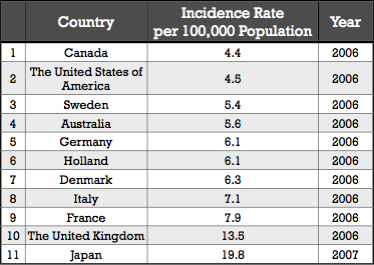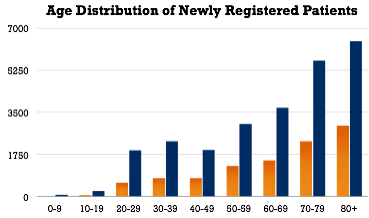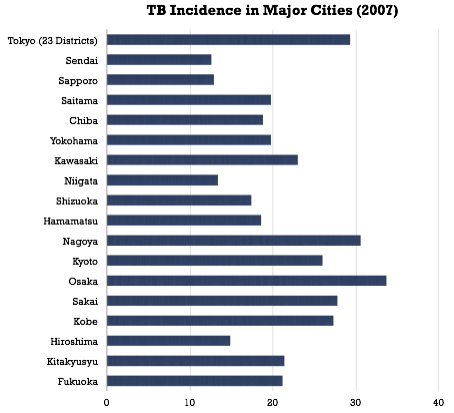Current TB Situation In Japan





















In 2007 the total number of newly registered TB patients was 25,311,19.8 per 100,000 population. Compared to the level of western developed countries, the TB notification rate in Japan is still relatively high. For example, Japan has a notification rate 4.5 times that of Canada, 4.4 times that of the United States, and 3.7 times that of Sweden. In Japan in 1997, the rate increased after the stagnation of decline of the TB notification rate for two decades and in response to this a declaration of TB emergency was made by the Japanese government in 1999. Since then, the decline rate has remained at a relatively high level in response to countermeasures to control TB in Japan.

TB
19.8
4.9
Trend of Incidence in Japan and the US
TB Incidence Rate of Japan and Other Countries

(Source 1~10: Global Tuberculosis Control WHO Report 2008)

Age Distribution of Newly Registered Patients (2007)
-
‣Total smear positive TB patients: 10,204 and incidence 8/100,000 population
-
‣The incidence rate in the 20-29 age group became larger compared with that of teenagers
-
‣The high risk population are in the 20-59 age group and are unemployed, in day-to-day or temporary employment.
Sm+
Total

New Trend in TB Incidence:
Most of Cases are in Big Cities
The urban TB issue, a universal problem, is also found in Japan and generally higher than the national average. This is related to the number of homeless people in major cities who are often diagnosed in a very serious and advanced condition and are likely to be a significant source of infection.
In Japan it is estimated that there are approximately 16,018 homeless people. Osaka has the largest homeless population (4,333) and Tokyo has the second largest homeless population (3,796).
Source: Health Labor and Welfare Ministry,
Survey for homeless people in Japan, 2008
Annual Surveillance Data for TB, 2008.
2009 Copyright © Research Institute of Tuberculosis/JATA All Rights Reserved.